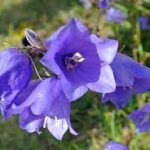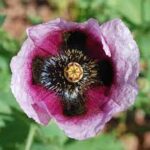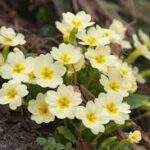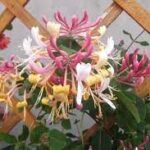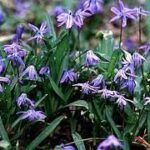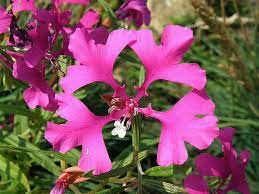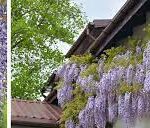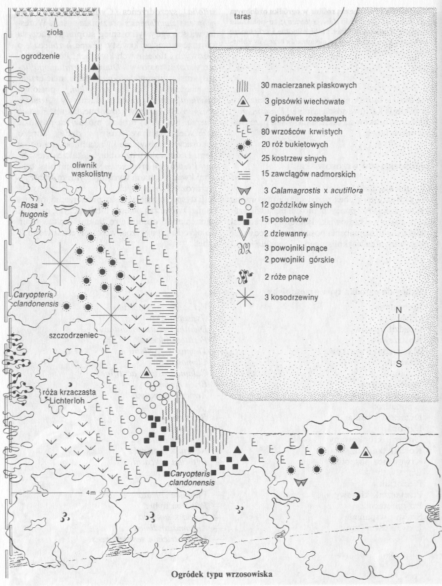Powojnik — Clematis spp.
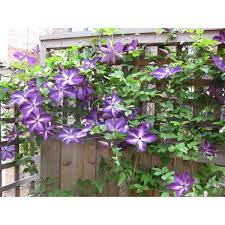 Z pnączy należących do tego rodzaju największe zainteresowanie budzą powojniki wielkokwiatowe. Istotnie — nikt nie mija obojętnie tych roślin w pełni kwitnienia. Ich wielkie, jedwabiste kwiaty urzekają intensywnymi, czystymi barwami, a zdobią je jeszcze długie, jasne pręciki. Najpopularniejszy jest powojnik Jackmana (Clematis jackmanii). Dorasta do 2—3 m i ma kwiaty ciemnobłękitne lub fioletowe, średnicy 8—10 cm, osadzone na długich, cienkich szypułkach i okrywające roślinę od góry do dołu. Są też odmiany o kwiatach białych i karminowych. Przez wielokrotne krzyżowanie otrzymano szereg mieszańców o wielkich kwiatach (średnicy do 15 cm) różniących się głównie barwami, które bywają czysto błękitne, różowe, czerwone, a zwłaszcza fioletowe w najrozmaitszym odcieniu. Często płatki są lekko paskowane lub żyłkowane, od spodu ciemniejsze i delikatnie owłosione.
Z pnączy należących do tego rodzaju największe zainteresowanie budzą powojniki wielkokwiatowe. Istotnie — nikt nie mija obojętnie tych roślin w pełni kwitnienia. Ich wielkie, jedwabiste kwiaty urzekają intensywnymi, czystymi barwami, a zdobią je jeszcze długie, jasne pręciki. Najpopularniejszy jest powojnik Jackmana (Clematis jackmanii). Dorasta do 2—3 m i ma kwiaty ciemnobłękitne lub fioletowe, średnicy 8—10 cm, osadzone na długich, cienkich szypułkach i okrywające roślinę od góry do dołu. Są też odmiany o kwiatach białych i karminowych. Przez wielokrotne krzyżowanie otrzymano szereg mieszańców o wielkich kwiatach (średnicy do 15 cm) różniących się głównie barwami, które bywają czysto błękitne, różowe, czerwone, a zwłaszcza fioletowe w najrozmaitszym odcieniu. Często płatki są lekko paskowane lub żyłkowane, od spodu ciemniejsze i delikatnie owłosione.
Powojniki te mogą rosnąć na przeciętnej glebie, z wyjątkiem bardzo ciężkiej, podmokłej, najlepiej jednak kwitną na żyznej i próchnicznej. Miejsca pod nie należy nawieźć przegniłym obornikiem lub kompostem (zwykłym albo sporządzanym z odkwaszonego torfu).
Chociaż powojniki te pochodzą z południa, nie znoszą zbyt silnego nasłonecznienia i trzeba je sadzić przy południowo-wschodniej lub południowo-zachodniej ścianie altany. Pergole, trejaże i bramki, na których powojnik doskonale się prezentuje, powinny być także w godziny południowe lekko ocienione. Chodzi tu nie tyle o wrażliwość roślin na promienie słoneczne w okresie wegetacji, ile o uniknięcie dużych wahań temperatury na przedwiośniu. Bardzo ważne jest regularne i obfite podlewanie, gdyż powojnik nie znosi suszy.
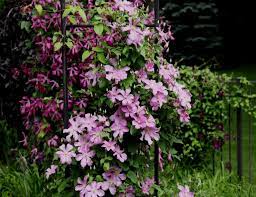 Powojnik wspina się za pomocą ogonków liściowych, które owijają się wokół podpór, ale u mieszańców wielkokwiatowych zdolność ta jest słabo rozwinięta, trzeba więc przywiązać je w paru miejscach do podpory miękkim sznurkiem lub rafią (zwłaszcza młode egzemplarze).
Powojnik wspina się za pomocą ogonków liściowych, które owijają się wokół podpór, ale u mieszańców wielkokwiatowych zdolność ta jest słabo rozwinięta, trzeba więc przywiązać je w paru miejscach do podpory miękkim sznurkiem lub rafią (zwłaszcza młode egzemplarze).
Najwięcej niepokoju budzi mała wytrzymałość powojników na mróz. Istotnie, rośliny te źle znoszą ostre zimy i najlepiej rosną w cieplejszej części kraju — zachodniej i południowo-zachodniej. Zwykle jednak wystarczające zabezpieczenie stanowi kopczyk usypany wokół nasady pędu z torfu, kompostu albo ziemi zmieszanej z liśćmi. Jeżeli pędy przemarzną, można je przyciąć nisko nad ziemią (podobnie jak byliny), a roślina wyda nowe, które zakwitną w tym samym roku, gdyż kwiaty tworzą się na pądach tegorocznych. Cięcie większości powojników wielkokwiatowych przeprowadza się według zasad stosowanych do krzewów I grupy.
